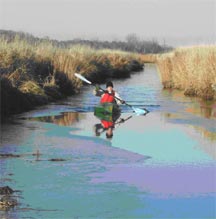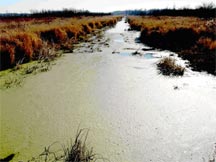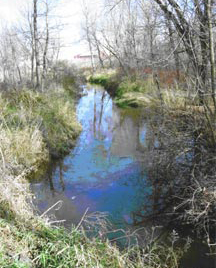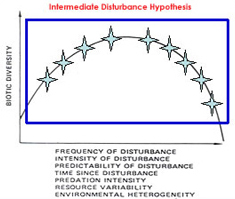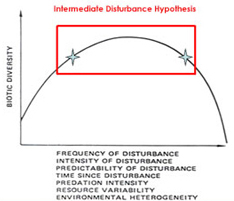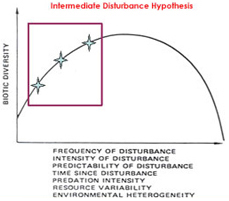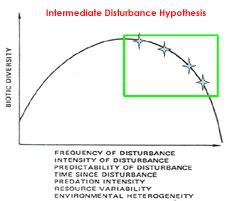Investigators:
Adam W. Sealock, [email protected]
Leonard C. Ferrington Jr., [email protected]
Hardwood Creek near Hugo, Minnesota has a long history of modification by ditching. Most of the stream in the upper part of the watershed flows through boggy peat deposits that have been ditched repeatedly since 1905. Some of these stretches have been re-ditched as recently as winter 2004. Further downstream in the watershed other segments of the stream have not been ditched for 20+ years, or apparently never have been modified by ditching.
Cross-sectional profiles and habitat characteristics of stream beds are strongly modified by ditching. These modifications have the potential to change the community structure and diversity of aquatic invertebrates that form much of the food chain for small minnows and other forage fish that occur in streams. Without regular maintenance, however, ditched sections of streams begin to revert to more natural cross-sectional profiles and habitats and the invertebrate diversity may recover. In this project we will test a recently developed hypothesis to determine if the biological diversity of aquatic invertebrates can be predicted as a function of ditching activities.
The hypothesis we will test is called “The Intermediate Disturbance Hypothesis”. This hypothesis predicts that intermediate levels of either natural or human-induced disturbance will increase the level of biological diversity relative to levels that occur when disturbances are very severe or when disturbances are very minimal. Areas of Hardwood Creek that have recently been ditched are considered to have the most severe levels of disturbance and areas that have never been ditched are considered to be areas that are minimally disturbed. In contrast, areas that have been ditched, but not in recent years, are considered to have intermediate levels of disturbance and according to the hypothesis should have the highest levels of diversity of aquatic invertebrates.
To test the hypothesis we have collected dip net samples of aquatic invertebrates in June and October 2004 from sections of Hardwood Creek that were ditched in winter 2004, not ditched in recent years, and never ditched. We have also taken collections of surface floating pupal exuviae of Chironomidae from these same sites according to the protocol published by Ferrington et al, 1991. Our sample sites include two sites that were ditched in 2004, four sites that have been ditched but not in recent years, and two sites that have never been ditched.
Download Interim Report (pdf 48 KB)
